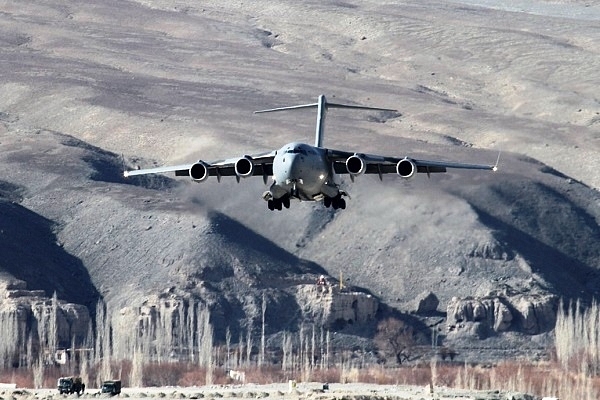Insta
IAF Strengthened Its Capabilities After 2019’s Balakot Airstrike On Pakistan, Helped In Resisting China In 2020

Indian Air Force showcasing its rapid airlift capability (@IAF_MCC/Twitter)
Since the bombing of Jaish-e-Mohammed (JeM) terrorist camps in Pakistan’s Balakot in 2019, the Indian Air Force (IAF) has significantly strengthened its offensive capabilities, reports Hindustan Times.
The platforms inducted after the Balakot raid include Rafale fighter jets, missiles, smart air-to-ground weapons, AH-64E Apache attack helicopters, and CH-47F (I) Chinook multi-mission helicopters.
The cutting-edge weaponry that was inducted after the unprecedented cross-border strike on 26 February, 2019 helped India to resist the Chinese aggression in Eastern Ladakh.
“IAF’s fighter fleet, reinforced with new Rafale jets with ultra-modern armament such as Meteor beyond-visual-range missiles and Hammer air-to-ground munition, and the Apache attack helicopters sent a strong message to the Chinese, while Indian transport aircraft played a crucial role in the swift mobilisation of troops and equipment to forward areas,” said Air Vice Marshal Manmohan Bahadur (retd), additional director general of Centre for Air Power Studies.
“While ‘Balakot’ was only a strike mission, the long-drawn-out face-off with China brought to fore the massive airlift capability of IAF. The Indian Army inducted almost three divisions into Ladakh, along with heavy armour, using the transport fleet of IAF,” said Bahadur.
“Some capability gaps still remain, especially of combat enablers like AWACS (airborne warning and control systems) and flight refuelling aircraft, deficiencies that the government must look into urgently,” he added.
Introducing ElectionsHQ + 50 Ground Reports Project
The 2024 elections might seem easy to guess, but there are some important questions that shouldn't be missed.
Do freebies still sway voters? Do people prioritise infrastructure when voting? How will Punjab vote?
The answers to these questions provide great insights into where we, as a country, are headed in the years to come.
Swarajya is starting a project with an aim to do 50 solid ground stories and a smart commentary service on WhatsApp, a one-of-a-kind. We'd love your support during this election season.
Click below to contribute.
Latest